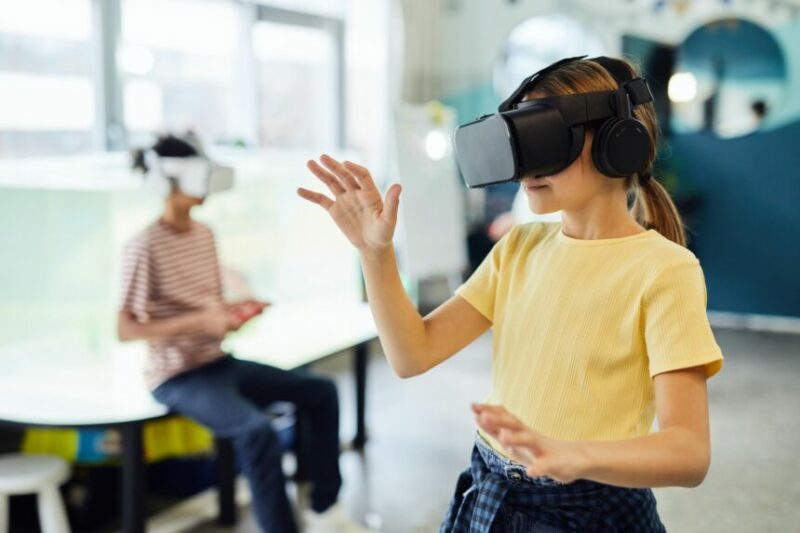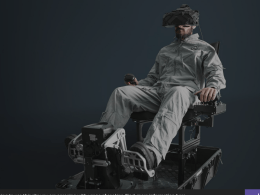The diagnosis of ADHD is difficult. To make it easier, researchers from Finland are relying on Virtual reality and eye trackingIn the VR game "EPELI", players have to complete everyday tasks. Meanwhile, they face a series of distractions and many opportunities for interaction. The game measures how efficiently they complete the tasks.
Attention deficit disorder, or ADHD for short, is a widespread behavioural and emotional disorder. More than five percent of all children and adolescents worldwide are said to be affected. This makes ADHD the most common psychiatric disorder in children and adolescents.
Diagnosis is often a problem in therapy. Patients have to explain symptoms in interviews or questionnaires and are diagnosed under subjective observations. To facilitate the diagnosis, a Finnish research team is taking a practical approach and observing patients in everyday situations. For this purpose, the researchers use Virtual Reality and eye tracking.
VR game simulates everyday situations
Virtual reality has long since arrived in medicine and research, as we have already reported morefahr. Researchers from the Universities of Aalto, Helsinki and the Åbo Academy have now developed a VR game called EPELI - short for Executive Performance in Everyday Living - which is intended to help diagnose ADHD. Subjects find themselves in a virtual children's room and have to perform everyday tasks such as making the bed or tidying the room. Meanwhile, they are exposed to a number of distractions such as dogs barking, toys and many opportunities for interaction.
"The game offers a list of tasks that simulate daily life, such as brushing teeth and eating a banana. The player has to remember the tasks even though there are distractions in the environment, like a TV that is on. The game measures everything: how often the child clicks on the controls and how efficiently he or she completes the tasks. Efficiency correlates with functioning in everyday life, which children with ADHD often have problems with," explains developer Topi Siro.
Eye tracking helps with diagnosis
With the eye tracking of the VR glasses the researchers measure the eye movements of participants as they complete the tasks. "We tracked children's natural eye movements while they completed different tasks in a virtual reality game, and this proved to be an effective method for detecting ADHD symptoms," says Liya Merzon, a PhD student at Aalto University.
"The ADHD children's gazes paused longer on different objects in the environment, and their gaze jumped faster and more frequently from one point to another." This could indicate a delay in the development of the visual system and poorer information processing than in other children.
Virtual reality as therapy for ADHD conceivable
Project leader Juha Salmitaival enumerated further advantages: "This is not only a new technology for objective assessment of ADHD symptoms. The children also find the game more interesting than standard neuropsychological tests."
In addition to diagnosing and assessing symptoms, the researchers can therefore also imagine VR games being used as a rehabilitation tool for ADHD.
"We want to develop a digital therapy based on games that can help children with ADHD to get excited about things they wouldn't otherwise do. There is already an approved game in the US for ADHD rehabilitation," says Salmitaival.
Virtual Reality: A versatile diagnostic tool
"I think virtual reality is an interesting tool because you can control exactly what happens in the world of stimuli and at the same time gather information about behaviour in a natural situation," says Linda Henriksson, an expert on how the brain processes visual information and also involved in EPALI.
The researchers see great potential in EPALI. With adaptations, the VR game could also be used in diagnoses and therapies for people with autism, speech problems or brain trauma, as well as for adults with ADHD, symptoms related to cerebral palsy or declining memory in old age.
Source: Mixed









